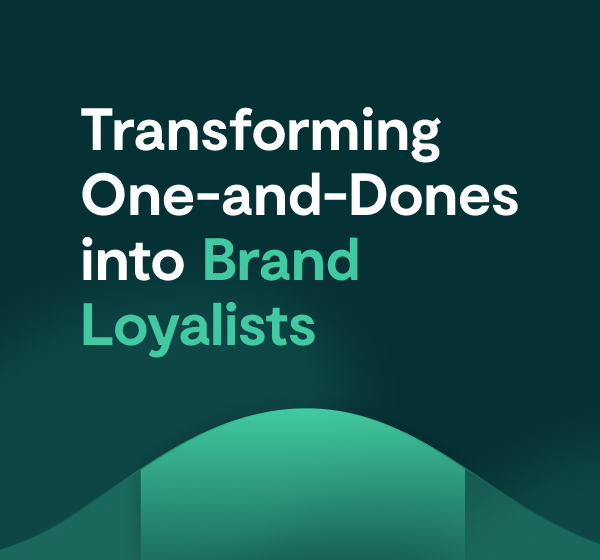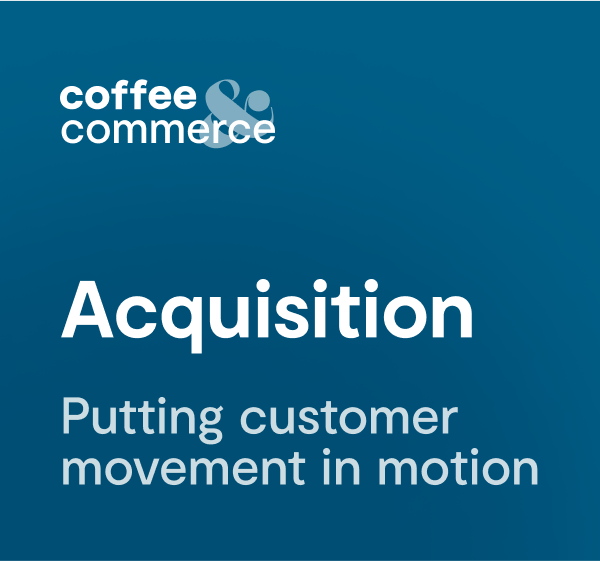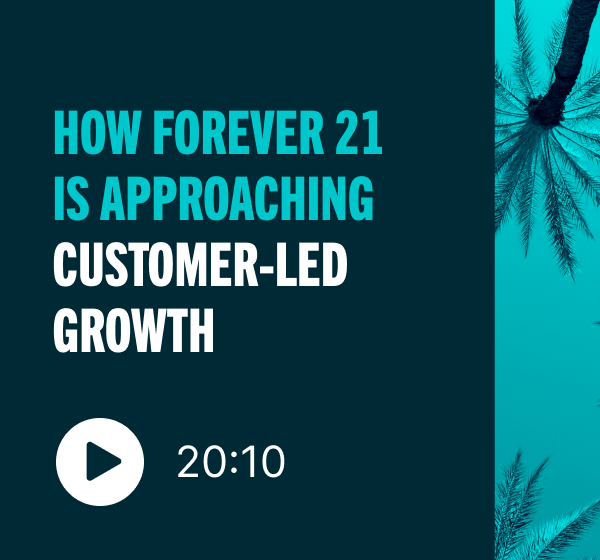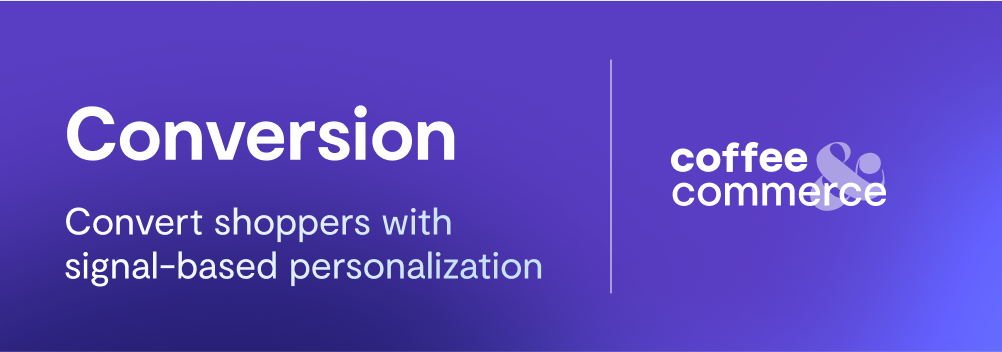
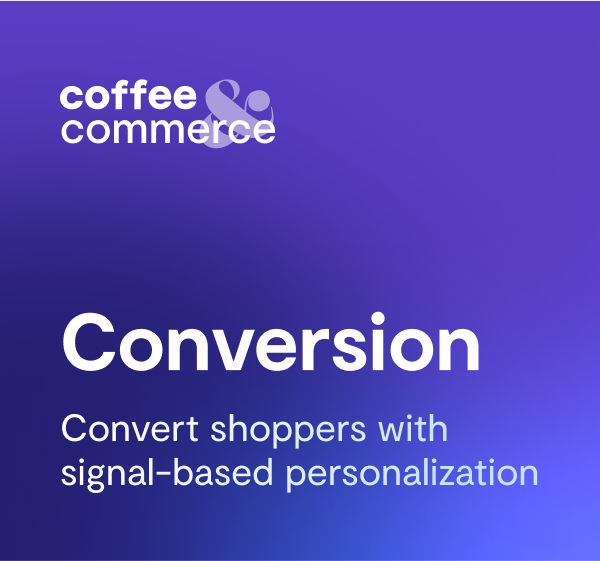
How Retailers Can Use Customer Signals to Convert Non-Buyers
In retail, the acquisition stage is pure potential: You’re getting shoppers in the door, and setting the stage for what will (hopefully) be a fruitful long-term relationship. Some of these shoppers will make a purchase and then disappear for life. Others will stick around for a year or two. And some will come back again and again, joining the small core of loyalists who are central to any retailer’s bottom line.
But before any of that can happen, you need to convert. Like acquisition, conversion today is harder than it’s ever been. With less disposable income, many customers have become more fickle. Meanwhile, social platforms have become cagier about information-sharing, and retailer competition is unprecedentedly fierce.
In this month’s installment Coffee & Commerce, we outlined a number of useful ways for retailers to use customer signals to bypass these problems and turn non-buyers into customers. In the process, they discussed how to increase reach, relevance, and purchase frequency throughout the customer lifecycle.
Pay attention to customer signals
Optimizing conversion in 2024 means acknowledging a fundamental fact: Batch-and-blast still works, but only when combined with a customer-led approach. Measuring the customer’s movement through the lifecycle requires “looking beyond channel metrics to things like identification rate and purchase frequency,” said Sarah Cascone, VP of Marketing at Bluecore.
This customer-led paradigm is all about customer signals. In the space of just a few minutes browsing your site, a shopper can send a remarkably wide range of these signals, and capitalizing on them is key to conversion.
Maybe they visited a certain category page. Maybe they abandoned a specific search. Maybe they checked a size guide, or put a product in a cart and then abandoned it. By capitalizing on these moments of intent — using customer signals to trigger precisely the right email at precisely the right moment — retailers stand to significantly boost conversion.
These customer signals are made all the more powerful for retailers when combined with product signals, such as whether an item is a new arrival or low inventory. Paying attention to these signals allows retailers to guide customers towards the products that are right for them, and for your company at that particular moment in time
“Looking for these kinds of opportunities, as opposed to just hitting a ‘Sale’ button, has done very well for us,” said Courtney Eckert, CRM Manager at Carhartt.
Implement frequent testing
These customer signals are useful on a per-customer basis. In aggregate, they can also play a meaningful role in guiding your overall site strategy. And one of the best ways to leverage these aggregate signals is testing.
“Continually testing is imperative to ensure you have the right experience for your customers, but also that you’re capitalizing on those moments of intent for those prospects coming to your site for the first time,” said Amanda Coffin, Customer Success Leader at Bluecore.
Let’s say you’re having trouble getting shoppers past the final hurdle of the checkout page. You know you need some final enticement, but you’re not sure what will work best. So, you test. You offer 10% off to one tranche of customers, and free shipping to another. In the space of just a few days with relatively minimal effort, you can use customer signals to A/B test your way into a substantial conversion lift.
This example isn’t random. One key takeaway from this Coffee & Commerce talk was that free shipping is far more effective toward the end of the purchase funnel than it is at the beginning. Instant discount or free shipping pop-ups are more likely to alienate than convert. It’s the difference between someone handing you a flier outside of a clothing store at the mall — something you’re likely to crumple up and throw away — and learning a product is on sale after you’ve gone through the effort of trying it on.
Boost first purchase value through recommendations
It’s important to note that conversion isn’t just about getting your customer to make a purchase. Optimizing the value of that purchase is just as important.
Think of the magazines and chocolate bars by the checkout at the grocery store, impulse buys designed to bulk-up carts at the last minute. Retailers can deploy these even more effectively, because they can use machine learning to surface relevant add-ons.
And this applies not just during the checkout process but during the product search process itself. Right now, many retailers offer sprawling online catalogs that can be difficult to navigate. Enhancing search result pages with relevant product recommendations is one effective way to guide customers towards products they may otherwise never find.
Crucially, that first purchase itself generates a ton of valuable customer signals. Average order value can tell you a lot about how your customers spend in aggregate, and can also grant individual insights into each customer. For instance, did they purchase full-price or on sale? Did they purchase in multiple categories? The answers to these questions can help guide your retention strategies moving forward.
Optimizing social marketing
Social media marketing has grown exponentially more challenging in recent years. For one, it’s more expensive. The walled gardens of the big social platforms have also become harder to meaningfully scale. How, then, can marketers optimize social spend while trying to boost conversion?
One key approach is to separate out buyers from non-buyers before you input your audiences. Discounts and free shipping play a significant role here as well. The crux of customer-led marketing, after all, is that your audience isn’t a monolith. Each shopper comes to your site with their own distinct preferences and motivations. Using behavioral data to determine whether someone is more likely to convert via discount or free shipping can help retailers save money on the margins.
Of course, this approach assumes you have extensive behavioral data to work from. Though every retailer does, many fail to capitalize on it.
If there is any secret to conversion, it is to first increase your opportunities to capture relevant customer information. Then you can use that data to assess your customer file and uncover opportunities for growth.
These opportunities are abundant — but you need to know how to find them.



